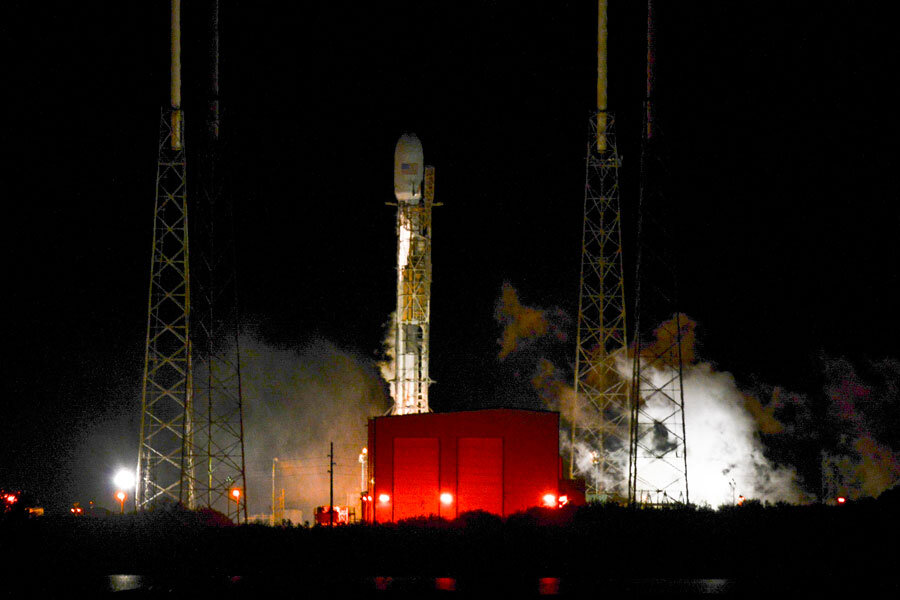What delayed SpaceX's launch this time?
Loading...
SpaceX has once again postponed its Falcon 9 rocket launch, which was scheduled to deliver a SES-9 communications satellite Tuesday night.
Although some of the previous cancellations have had to do with technical problems, such as fuel temperatures, there was nothing wrong with the rocket this time. Instead, the launch was canceled due to high winds.
“Unfortunately, upper-level winds continue to exceed acceptable limits and are expected to get worse as we approach tonight’s launch window, so we are forgoing today’s launch attempt,” said SpaceX spokesman Phil Larson in an email to The Christian Science Monitor.
SpaceX founder Elon Musk also tweeted about the postponed launch, saying, “Pushing launch to Friday due to extreme high altitude wind shear. Hits like a sledgehammer when going up supersonic.”
The Falcon 9 rocket was originally scheduled to launch last Wednesday.
Unlike Tuesday’s wind cancellation, last week’s launch attempts were initially postponed due to issues with the rocket’s fuel.
As the Monitor reported on Monday, many of SpaceX’s problems are due to a desire to innovate rather than a failure to succeed. Musk’s company uses cryogenic propellant, which is liquid oxygen fuel mixed with kerosene and kept at a very low temperature to maintain density.
According to Musk, SpaceX’s use of cryogenic propellant is innovative in rocketry.
“The thrust is higher, we’ve improved the stage separation system, we stretched the upper stage of the rocket to add more propellant to that,” said Musk at the fall meeting of the American Geophysical Union. “There are a number of other improvements in electronics. It’s, I think, a significantly improved rocket from the last one.”
Despite the new fuel’s benefits, however, recent delays are proof that SpaceX is experiencing growing pains as it attempts to adapt to the technology. Cryogenic propellant has been deemed “not worth the trouble” by George Sowers, vice president of Boeing and Lockheed Martin’s United Launch Alliance.
In order to use cryogenic propellent properly, SpaceX must time the propellant chilling and loading process perfectly. Both Thursday’s and Sunday’s launch attempts were cancelled due to hiccups in that fueling process.
Higher fuel density can improve rocket performance. It can also help bring rockets back to Earth safely, one of Musk’s eventual goals for the Falcon rocket. SpaceX has already attempted barge landings with other iterations of the Falcon 9 rocket.
SpaceX hopes to see the Falcon 9 take to the skies soon. The European satellite company SES, whose satellite the Falcon 9 will eventually carry into space, has been awaiting this launch for a long time.
Falcon 9 launches were first postponed last summer, after a mid-air explosion by a SpaceX rocket in July. SES had originally scheduled its satellite launch for September, 2015.
According to earlier reporting by the Monitor, the SES-9 satellite will expand internet and television access to the Asia-Pacific region. SpaceX has said it is willing to send the Falcon 9 further into orbit to compensate for launch delays.
“Winds are forecast to exceed acceptable limits through Thursday,” said Larson. “Our team will continue working with the Air Force’s Launch Weather Officer to evaluate the best available opportunity for flight in the coming days.”








